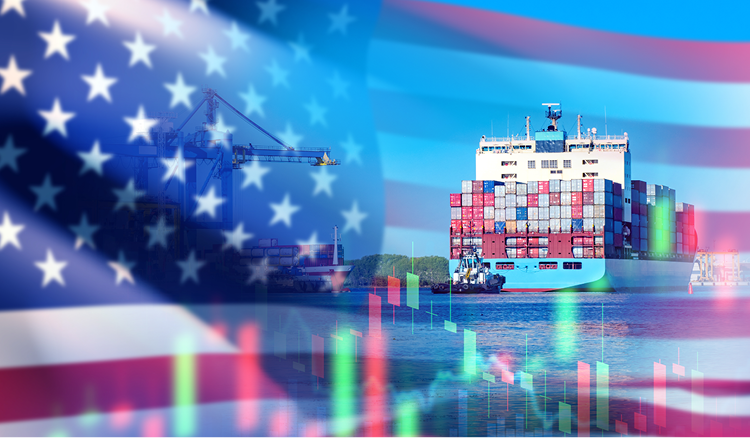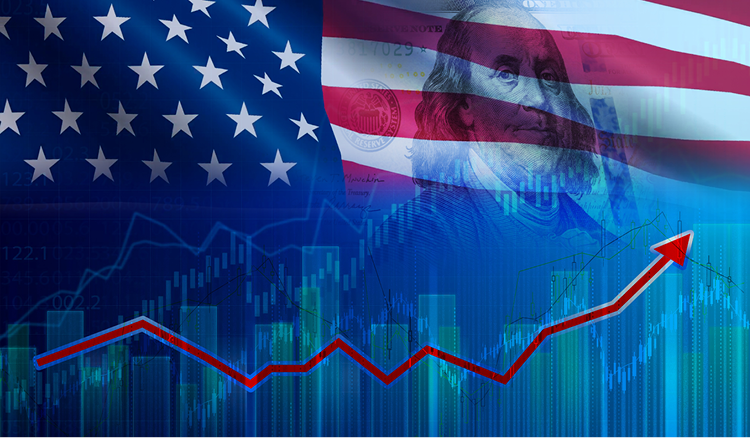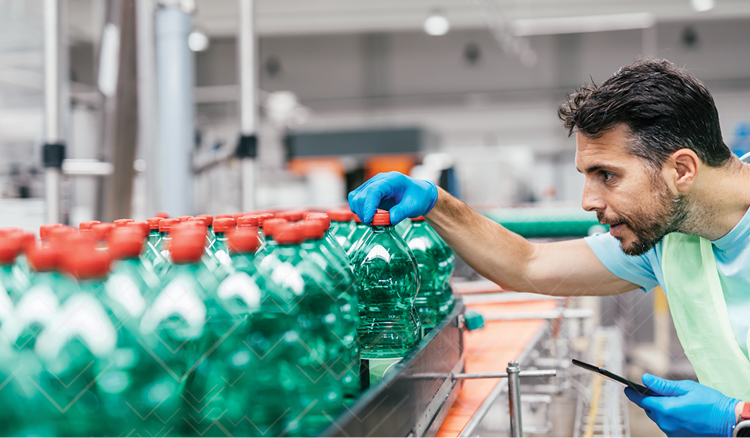Trump 2.0 Week 30 In Review: Discussing The China Deadline Extension, The Potential For Even Higher Tariffs on India, and More
While this week hasn’t been as action-packed as the last few, the trade landscape still saw developments worth noting for leaders in manufacturing and distribution. From policy adjustments to strategic investment moves, the shifts may be smaller in scale but still carry long-term implications. For those paying attention, these quieter moments often reveal the early signals of bigger changes ahead—and the companies ready to act on them will be the ones to gain an edge.
This week’s highlights:
- Trump signs executive order extending China deadline by 90 days
- Treasury Secretary Bessent warns of additional tariffs on India if Putin talks fail
- U.S. and EU move closer to finalizing trade deal
- Trump warns of stock market crash if courts attempt to block tariffs
- Pharma tariffs likely weeks away
- Trump says he will set tariffs on semiconductor chips in coming weeks
- Major investment announcements from Ford, GE, and more
Plus: Why agility is critical in today’s market, and how Veryable turns it from a buzzword into a daily reality, giving businesses the ability to flex and scale in real-time.
U.S. and China Extend Trade Truce By 90 Days
On Monday President Trump extended the U.S.-China tariff truce for another 90 days, just hours before steep duty increases were set to take effect. The executive order moves the deadline to November 10th, keeping U.S. tariffs on Chinese imports at 30% and China’s duties on American goods at 10%. Earlier this year, both sides had threatened triple-digit rates—145% from Washington and 125% from Beijing—before scaling back after May negotiations in Geneva. The White House says the pause allows time to address a nearly $300 billion trade deficit, expand U.S. market access, and resolve national security concerns, while Beijing is calling for the removal of “unreasonable” restrictions and a focus on “win-win cooperation.”
Talks remain centered on issues including advanced chip sales, access to rare earths, and China’s purchases of Russian oil. Trump recently allowed Nvidia and AMD to resume certain chip sales to China in exchange for sharing 15% of revenues with the U.S. government, a deal critics call a “shakedown.” The administration is also pushing for TikTok’s separation from ByteDance, which Beijing opposes. Despite the truce, trade flows remain weak—U.S. imports from China in June fell nearly 50% year-on-year, while exports dropped 20% in the first half of 2025. For import-reliant industries, the extension offers short-term relief but little certainty.
For U.S. manufacturers, the ongoing volatility is also a chance to gain ground. With overseas supply chains strained, domestic producers that can adapt production, scale labor, and shift sourcing quickly are well-positioned to win new market share.
Bessent Warns of Additional Tariffs on India if Trump-Putin Talks Fail
On Wednesday, U.S. Treasury Secretary Scott Bessent warned that secondary tariffs on India could rise, depending on the outcome of President Trump’s meeting with Vladimir Putin in Alaska on Friday. Current measures include a 25% penalty, along with an additional 25% tariff for buying Russian oil and weapons, which is set to take effect on August 27th.
India’s growing reliance on Russian crude, making up to 35–40% of its oil supply, has complicated trade talks, which India defends as essential to shielding its population from high energy costs. Negotiations have also stalled over India’s refusal to lower tariffs in sensitive sectors like agriculture and dairy.
Despite these tensions, Commerce Secretary Sunil Barthwal confirmed that a sixth round of bilateral trade talks (BTA) is scheduled for August 25th, though details of the U.S. delegation’s visit remain uncertain. For now, Indian exporters in sectors such as leather, textiles, shrimp, chemicals, and jewelry are bracing for a heavy impact.
For U.S. manufacturers and distributors, the tariffs present numerous opportunities. With Indian goods facing higher costs, domestic alternatives in textiles, chemicals, and other sectors may see increased demand. Companies that can quickly scale production and adapt their supply chains will be best positioned to capitalize on these shifts.
U.S. and EU Move Closer To Finalizing Handshake Trade Deal
This week, the European Commission confirmed it had received a proposed joint statement from the U.S. outlining technical details of the July trade agreement between President Trump and Commission President Ursula von der Leyen. The deal sets a 15% baseline tariff on EU goods, with the EU committing to invest $600 billion in the U.S. and purchase €750 billion in U.S. energy.
While non-binding, the joint statement will define tariff exemptions, including the planned reduction of U.S. car tariffs from 27.5% to 15%. EU spokesperson Olof Gill said both sides will continue exchanging suggestions until a final text is reached.
For U.S. manufacturers and distributors, finalizing this agreement is critical because it reduces uncertainty over tariffs and ensures more predictable costs for imported materials and components. The deal also supports investment and energy purchases, which will further strengthen domestic production and distribution networks.
Pharma, Steel, and Chip Tariffs Weeks Away
President Trump announced on Friday, while traveling aboard Air Force One to a meeting with Putin in Alaska, that his administration plans to impose tariffs on pharmaceutical imports, steel, and semiconductor chips in the coming weeks. The pharmaceutical tariffs follow a months-long national security review of finished drugs, active pharmaceutical ingredients (APIs), and other raw materials. Although initially expected to conclude between mid-May and mid-June, sources now say the announcement is likely several weeks away. Tariffs are expected to start at lower rates to give companies time to build domestic manufacturing before rising sharply.
Trump also confirmed new tariffs on steel and semiconductor chips, following the same phased approach. Companies that commit to expanding U.S. production may qualify for exemptions, with higher tariffs applied later for noncompliant imports. These measures align with prior sector-specific tariffs and domestic investment initiatives, including Apple’s recent $100 billion U.S. expansion announcement, highlight the administration’s goal of strengthening supply chains, creating jobs, and boosting American manufacturing competitiveness.
Trump Warns Courts as Legal Battle Over Tariffs Intensifies
President Donald Trump has issued a stark warning to courts reviewing his tariffs, calling a potential ruling against him a “judicial tragedy” that could make it “impossible to ever recover, or pay back” the revenue and influence generated by the tariffs. Speaking on Truth Social on August 9th, Trump argued that courts acting against his policies would be prioritizing politics over the “wealth, strength, and power of America,” invoking the Great Depression to underscore the stakes.
The controversy centers on Trump’s unprecedented use of the 1977 International Emergency Economic Powers Act (IEEPA) to impose tariffs without congressional approval or prior investigations. Signed into law by President Jimmy Carter, IEEPA was designed to let presidents address “unusual and extraordinary” national emergencies, primarily through asset freezes and sanctions. Trump is the first president to rely on it to impose broad tariffs, and a key legal question is whether the act even grants this authority. During oral arguments before the U.S. Court of Appeals for the Federal Circuit at the end of July, an 11-judge panel appeared skeptical, with one noting that IEEPA “doesn’t even mention the word ‘tariffs.’”
The case is likely headed to the U.S. Supreme Court, which could ultimately decide whether the president can bypass Congress in imposing tariffs. A ruling against Trump could lead to importers seeking refunds for duties already paid, while also reshaping the administration’s leverage in future trade negotiations. For now, the tariffs remain in effect, leaving businesses and importers navigating continued uncertainty in trade policy.
Notable New Investments in U.S. Manufacturing
U.S. manufacturing is riding a wave of new investments and job growth under President Trump, fueled by trade policies and initiatives designed to bolster domestic production. These measures are prompting companies to reshore operations, ramp up output, and reinforce America’s manufacturing backbone. Here are some of the most significant announcements from the past week.
Ford Invests $5 Billion in U.S. EV Production, Boosting Jobs and Manufacturing Innovation
Announced Monday, Ford is investing approximately $5 billion across its Louisville Assembly Plant and BlueOval Battery Park Michigan to produce a new midsize electric pickup (launching in 2027) and advanced prismatic LFP batteries, expected to create nearly 4,000 American jobs. The investment leverages the Ford Universal EV Platform and Production System for efficient, high-quality, scalable EV production, strengthening the U.S. supply chain, modernizing manufacturing, and positioning the country as a leader in electric vehicle innovation. Read More
GE Appliances To Invest $3B in Domestic Manufacturing Footprint
GE Appliances, owned by Haier, announced plans Wednesday to invest over $3 billion in its U.S. operations over the next five years, creating 1,000 jobs across five states. The investment will expand its air conditioning and water heating portfolio, increase production output, and modernize 11 U.S. manufacturing plants with advanced automation and capital equipment. Since Haier acquired GE Appliances in 2016, the company will have invested $6.5 billion across its U.S. manufacturing and distribution network. This move aligns with broader trends of global firms increasing domestic production following new trade policies under President Trump. Read More
AbbVie Expands U.S. Manufacturing with $195 Million API Facility
AbbVie is investing $195 million to build a new active pharmaceutical ingredient (API) facility in North Chicago, Illinois, set to be operational by 2027. The expansion will strengthen U.S. chemical synthesis capabilities for neuroscience, immunology, and oncology medicines and is part of the company’s broader $10 billion commitment to domestic innovation and manufacturing—joining other major pharma investments from Hikma, AstraZeneca, and more that are boosting U.S. production and supporting thousands of American jobs. Read More
Phillips Commits $150 million To Manufacturing & Research
Philips is investing over $150 million in U.S. manufacturing and research and development to expand production of AI-powered health technology. The investment includes the expansion of its Reedsville, Pennsylvania facility, which will enhance production of AI-enabled ultrasound systems and allow for customized software and configurations for cardiovascular, general, and maternal care. Philips is also expanding its image-guided therapy facility in Plymouth, Minnesota, including a new medtech training center. These projects are expected to create more than 270 skilled jobs and strengthen Philips’ ability to deliver advanced healthcare solutions to hospitals nationwide, including facilities run by the Department of Veterans Affairs and Department of Defense. Read More
Century Aluminum to Restart Mt. Holly Smelter, Boosting U.S. Aluminum Production and Jobs
Century Aluminum plans to invest nearly $50 million to restart over 50,000 metric tons of idled production at its Mt. Holly, South Carolina smelter, creating numerous jobs and boosting U.S. aluminum output to levels not seen since 2015. Supported by tariffs, power agreements, and local incentives, full production is expected by June 2026. Century is also advancing a greenfield project—the first new primary aluminum smelter in the U.S. in 45 years—potentially doubling domestic output, strengthening supply chains, supporting national security, and driving economic growth. Read More.
Operational Agility: Your Competitive Edge in a Rapidly Shifting Market
In a world where trade policies, tariffs, and supply chains can shift overnight, the companies that thrive aren’t the biggest, they’re the fastest to adapt. Companies need to pivot quickly to respond to sudden changes in demand, supply delays, or market disruptions, because hesitation can be costly. Failing to adjust rapidly can and will lead to missed orders, production bottlenecks, increased operational costs, strained customer relationships, and lost market share to more agile competitors.
Veryable helps businesses do exactly that. Our on-demand labor platform lets you scale your workforce up or down in real time, without the delays, costs, or burnout tied to traditional staffing models. Whether it’s handling a sudden surge in shipments ahead of a new tariff or adjusting to shifting production needs, Veryable gives you the flexibility to respond instantly—keeping operations running smoothly, efficiently, and within cost targets.
In today’s uncertain environment, agility isn’t just a competitive advantage—it’s essential for growth. Veryable equips your business to turn disruptions into opportunities, helping you stay ahead no matter what changes come next.
Ready To Get Started?
Talk to an Expert Create Free Business Profile How To Get Started
Resources to Stay Ahead
U.S. Manufacturing Today Podcast
For more information and insights, make sure to check out our U.S. Manufacturing Today Podcast. Hosted by Veryable’s Head of Reindustrialization & Growth Innovation, Matt Horine, this podcast is your go-to source for clear, actionable insights in a time of sweeping policy change.
In this week's episode, Galvanick CEO & Co-founder Josh Steinman joins host Matt Horine to break down the critical cybersecurity challenges threatening our industrial backbone. From his service in the U.S. Navy to his tenure as Director of Cybersecurity at the National Security Council, Steinman brings a unique perspective on how to protect critical infrastructure.
Available on: Spotify, Apple, YouTube, and PocketCasts.
Navigating Trump 2.0
For additional insights into the developments under Trump 2.0, visit our “Navigating Trump 2.0” page. There you'll find comprehensive information on recent and potential future changes, along with a collection of articles offering guidance for manufacturers and distributors on how to succeed in this rapidly evolving environment.
Veryable Vendor Network
The Veryable Vendor Network (VVN) is a growing ecosystem of manufacturing, warehousing, and logistics businesses using on-demand labor to stay fast, flexible, and deliver consistent world class service, regardless of daily demand. Whether you’re looking to shorten lead times, strengthen your supply chain, or find reliable domestic partners, the VVN connects you with suppliers operating at peak efficiency.
Looking for qualified suppliers?
Submit a form, and we’ll match you with the right partners. If you’re already a Veryable user, visit your business portal and click the “Vendor Network” option on the left hand side navigation bar. From here you’ll be able to find qualified suppliers, and quickly submit an RFQ in just a few clicks.
Previous Posts
How On Demand Labor Helps Manufacturers Maintain World Class Quality When Demand Refuses to Sit Still
The Future of Manufacturing and Logistics
Create a free business profile today to explore our platform.






